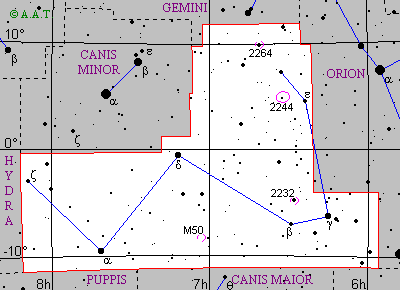 |
 |
| English name | Unicorn | ||||
|---|---|---|---|---|---|
| Major stars | No star of the constellation exceeds the magnitude 3,5. | ||||
| Description | Weak constellation surrounded by Orion, Canis Maior and Canis Minor. Among the most interesting stars are surely beta Monocerotis, a triple formed by three white-blue component, delta Monocerotis, a double observable to the naked eye, and epsilon Monocerotis, a couple constituted by a yellow star and a blue one, visible with modest telescopes.
|
||||
| Mythology and history | This constellation was invented by the Dutch astronomer and theologian Petrus Plancius in 1613. It represents the mythological animal of which it has the name. | ||||
 Back to constellations page.
Back to constellations page.